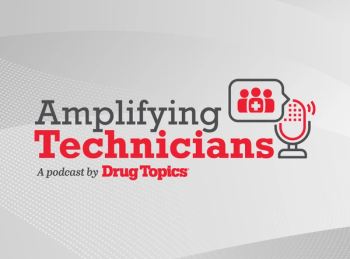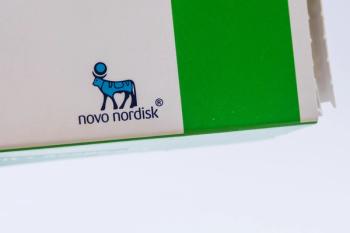
- Total Pharmacy® October 2025
- Volume 03
- Issue 05
Battling Burnout in Pharmacy: Strategies for Survival and Resilience
Warning: Being an owner or an employee at an independent pharmacy is likely hazardous to your mental health. Stress and burnout are rampant.
Fortunately, there are strategies to improve mental health and burnout. These include having an action plan to adjust operations, focusing on those patients on whom you can have the greatest positive impact, encouraging active participation in organizational decision-making, starting a mentoring program, and emphasizing self-care.
“Being tired and having too much pressure is a source of burnout,” said Shane Desselle, PhD, RPh, FAPhA, associate dean for research and professional affairs at Touro University California College of Pharmacy in Vallejo. “But having conflicting demands from different stakeholders, even more than the total amount of work, is probably a greater source of burnout, particularly for an owner of an independent pharmacy.”
Entities vying for attention include suppliers, insurers, patients, and employees. “Sometimes, the things they demand from us are in conflict,” Desselle told Total Pharmacy, along with the inability to ideally practice the way one prefers, perhaps because reimbursement systems dictate otherwise.
Besides low reimbursement rates, maintaining technician talent is a challenge. “Often, technicians are able to get better pay for a position that isn’t even pharmacy oriented,” Desselle said.
READ MORE:
According to Desselle, stress can lead to burnout, “but burnout is more than just being tired. Burnout is when you become disillusioned, disengaged, and disenchanted. The fact that things aren’t meeting your expectations actually contributes more to what we call psychological burnout than simply being tired or overworked, and this is compounded when you feel the work you do isn’t valued by others, including your supervisor and your peers.”
Stress and burnout can have devastating effects on an independent pharmacy that is operating on low margins. “If an employee calls in sick for just one day, it exacerbates labor shortages that exist in the greater market, so staffing issues are extremely problematic,” Desselle said. “If a pharmacy is short of staff, then the remaining employees have to pick up the [slack] from those [who] are absent.” Those on duty become more overworked, stressed, and likely to leave the practice.
Stress and burnout are contagious. “When people see others in stress, it heightens their own stress,” Desselle said. “When people see other people fail to cope adequately with stress and burnout,…it weighs on them as well.” If a pharmacy owner is not highly effective at hiding their stress and providing leadership, “it is going to take a toll, and employees are going to see it. This will only heighten employee stress and maybe increase the likelihood of them starting to look for greener pastures.”
Findings from a study on the prevalence and risk factors of burnout among 412 community pharmacists, published in JAPhA,1 showed that 74.9% of respondents experienced burnout. Of those, 68.9% attributed their burnout to emotional exhaustion, followed by depersonalization (50.4%), and reduced personal accomplishment (30.7%).
“The significant risk factors for burnout included shorter years of experience, practicing primarily in a chain pharmacy, and a lack of resources for burnout or resiliency,” wrote the authors. “Future research is warranted to examine optimal strategies to prevent burnout and promote resiliency in the profession.”
Prevention strategies for burnout, according to an ongoing continuing education program from the University of Connecticut School of Pharmacy,2 include ensuring a sustainable workload at the workplace, while allowing for periods of rest and recovery; encouraging active participation in organizational decision-making; providing appropriate rewards for employee achievement; fostering a positive and supportive environment at the workplace; and promoting fairness, impartiality and equity in decisions at work.
Jerry Silverman, BS Pharm, is a senior consultant and industry instructor at the Morristown, New Jersey–based Industry Pharmacists Organization (IPhO). He is also the author of the firm’s 2023 compendium, Pharmacist Job Satisfaction and Burnout in Traditional and Non-Traditional Practice Settings.3
“[Findings from] several recent surveys show that stress and burnout within the pharmacy space [are] getting worse,” Silverman told Total Pharmacy. For example, data from a recent study4 assessing Pennsylvania pharmacy student perceptions of pharmacist preceptor burnout during internships and rotations revealed “that students are observing such burnout in their preceptors that it is causing student pharmacists to rethink what areas of pharmacy they want to pursue. This does not bode well for traditional pharmacy practice, especially community,” Silverman said.
This comes at a critical time for the future of pharmacy because in less than a decade, pharmacy school applications have decreased by more than 20%.5
Unfortunately, there is no all-encompassing strategy to solve this professional crisis, according to Silverman, who recommends that pharmacists focus on the 20% of patients on whom they think they can make a positive impact regarding patient care and satisfaction. “Don’t get frustrated by the 80% where you can’t make a difference, whether because of time, labor constraints, or just overall practice setting challenges that do not allow you to interact with the patient on every prescription,” he said.
Pharmacists need to prioritize patients whose medications have a narrower therapeutic range, those who take drugs that are more dangerous and for more serious medical conditions, and especially patients who are getting new prescriptions.
“If you can do that, then you can feel better at the end of the day that you are contributing to health care,” Silverman says. “If you don’t do that, your burnout, stress levels, and [lack of] overall job satisfaction are going to make you less productive and fulfilled at work and spill over at home with your loved ones. Stress at work bleeds into everyone’s personal life.”
Desselle of Touro University California College of Pharmacy was a coauthor of a study that assessed resilience among 822 certified pharmacy technicians in the United States.6 “Pharmacy managers and owners can articulate a vision and help employees envision their futures in the organization to build resilience and buffer against stress,” he said.
A mentoring program for pharmacists can also reduce stress and burnout. Desselle also coauthored a study evaluating the lived experiences of mentors and mentees in a program for pharmacists.7 The 20 mentors “expressed considerable enthusiasm for their contribution, underscoring the program’s flexibility, its emphasis on mentoring vs merely advising, and its responsibility for enhancing or reconnecting with their professional identity, plus fostering more positivity and liveliness in their professional roles,” he said.
Desselle is encouraged by ongoing legislation at the state level that seeks to provide some relief through greater payer transparency and offers pharmacists the needed breaks for a better work environment. “There are also books and videos for stress management and how to cope, although not necessarily specific to pharmacy,” he noted.
Lisa Faast, PharmD, is founder and CEO of DiversifyRx, which provides actionable advice to pharmacies for increased profitability. “When it comes to work-life balance, I have a contrarian view, especially as an entrepreneur,” she told Total Pharmacy. “I don’t believe in work-life balance. I don’t think there is a teeter-totter [that] we are supposed to keep even keeled. In fact, the pressures from society, especially from people who are not entrepreneurs,…contribute to the stress of entrepreneurs from trying to maintain an even balance between life and work. When you’re an entrepreneur, work is life and life is work.”
Faast, who is a wife and mother of 4 children and runs multiple businesses, believes that the No. 1 source of burnout and stress for pharmacy owners is feeling stuck ––the uncertainty of where to go forward. “The fear of the inability to take action is what I think drives the gnawing and the toxicity inside themselves and their brain,” she said.
However, when a pharmacy owner has a plan to remedy a problem, “I don’t see the owner getting burned out,” Faast said. “I don’t see that ‘I’m at my wits’ end’ commentary anymore. Yes, entrepreneurship is tough, and pharmacy entrepreneurship is one of the toughest categories within entrepreneurship. But there are many people who thrive, and they thrive when they have an action plan, when they have something they look forward to.”
Conversely, there is no coming back once you reach hopelessness, according to Faast, who encourages pharmacy owners to embrace a plan, talk to others, pursue what works, have a specific goal, and strive to achieve it. “Be focused. You can’t fix everything at once; have a stepwise process,” she said. “Pharmacists and pharmacy owners are fantastic at following directions and…instructions.”
Regrettably, many pharmacy owners have not changed their operations to reflect the current retail environment, according to Faast. “But when they have a road map to adjust their operations, a lot of that burnout and stress goes away,” she said.
In addition, because pharmacy owners often care more about others than themselves, including their employees, self-care is crucial. “Take care of yourself, like…having blood work [done] or taking a Saturday afternoon o and disconnecting from electronics,” Faast said. “Perhaps take the supplements you sell. Force yourself to do the things you force others to do to relax and stay healthy.”
To read these stories and more,
Ready to impress your pharmacy colleagues with the latest drug information, industry trends, and patient care tips? Sign up today for our
REFERENCES
1. Patel SK, Kelm MJ, Bush PW, Lee HJ, Ball AM. Prevalence and risk factors of burnout in community pharmacists. J Am Pharm Assoc (2003). 2021;61(2):145-150. doi:10.1016/j.japh.2020.09.022
2. The scoop on pharmacy burnout: description and management strategies. University of Connecticut School of Pharmacy. Accessed September 5, 2025. https://pharmacy.uconn.edu/course/scoop-on-burnout/
3. Silverman J. Pharmacist Job Satisfaction and Burnout in Traditional and Non-Traditional Practice Settings: A compendium compiled by the Industry Pharmacists Organization. Industry Pharmacists Organization. Accessed September 5, 2025. chrome-extension://efaidnbmnnnibpcajpcglclefindmkaj/https://www.industrypharmacist.org/resources/2d739c86cc7a4e0cabcaca7825773d9f.pdf
4. Ayad G, Zupec J, Hamper J, Melissen P, Dempsey K, Huynh L. Assessing Pennsylvania advanced pharmacy practice experience student perceptions of pharmacist burnout in various areas of pharmacy practice. JAPhA Pract Innov. 2025;2(31):100049. doi:10.1016/j.japhpi.2025.100049
5. Brown DL. Years of rampant expansion have imposed Darwinian survival-of-the-fittest conditions on US pharmacy schools. Am J Pharm Educ. 2020;84(10):ajpe8136. doi:10.5688/ajpe8136
6. Asem V, Woodyard A, Desselle SP, et al. Correlations to and potential implications of resilience among certified pharmacy technicians. J Am Pharm Assoc (2003). 2023;63(1):90-96. doi:10.1016/j.japh.2022.08.023
7. Mantzourani E, Chang H, Desselle S, Canedo J, Fleming G. Reflections of mentors and mentees on a national mentoring programme for pharmacists: an examination into relationships, personal and professional development. Res Social Adm Pharm. 2022;18(3):2495-2504. doi:10.1016/j.sapharm.2021.04.019
Articles in this issue
about 1 month ago
5 Questions With a Pharmacist: Amina Abubakar From Avant Pharmacyabout 2 months ago
GLP-1 Litigation and the Road Ahead for Independent PharmaciesNewsletter
Pharmacy practice is always changing. Stay ahead of the curve with the Drug Topics newsletter and get the latest drug information, industry trends, and patient care tips.












































































































































